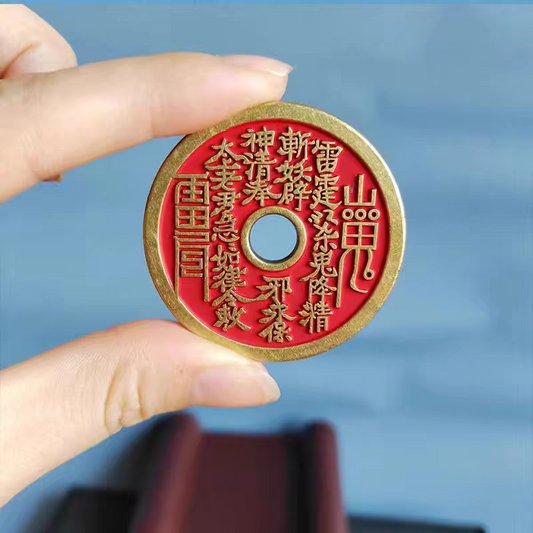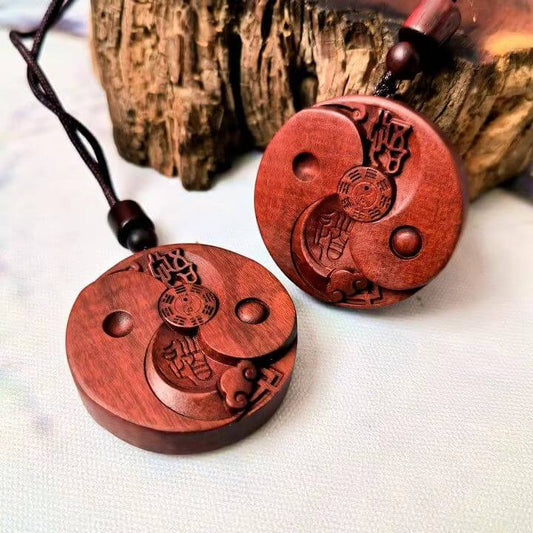
Chapter One of the Tao Te Ching
paulpengShare
Original Chinese text
道可道,非常道。名可名,非常名。无,名天地之始; 有,名万物之母。故常无,欲以观其妙;常有,欲以观其徼。 此两者,同出而异名,同谓之玄。玄之又玄,众妙之门。
The Dao that can be trodden is not the enduring and unchanging Dao.The name that can be named is not the enduring and unchanging name.(Conceived of as)having no name,it is the Originator of heaven and earth;(conceived of as)having a name,it is the Mother of all things.
Always without desire we must be found,
If its deep mystery we would sound;
But if desire always within us be,
Its outer fringe is all that we shall see.
Under these two aspects,it is really the same;but as development takes place,it receives the different names. Together we call them the Mystery.Where the Mystery is the deepest is the gate of all that is subtle and wonderful.
【译文】可以直接践行或者到达的道,不是永恒存在自然生成的道。可以自己命名的名,不是永恒存在自然生成的名。天地最初始的状态是无绪而平衡的,万物因彼此不相别而不用命名,因此世界是无名的;后来,为了明辨已被认知的万物而为他们起了不同的名字,万物因有名字而成为一种相对新且唯一的事物,万物于是就诞生了,此时的世界是有名的。因此,人们应该能在永恒存在的无名世界中察看道的奥妙;也能在永恒存在的有道世界中察看道的发端。常无名和常有道这两者同出一源却有不同的名字, 都可以用来称谓玄妙的道。玄妙的道博大深远,是探索一 切奥妙的门户。
Translation:
The Tao that can be directly practiced or attained is not the eternal, naturally arising Tao.
The name that can be assigned by oneself is not the eternal, naturally arising name.
In the primal state of heaven and earth, all was formless yet harmonious.
Things needed no names, for they were indistinct from one another—thus, the world was nameless.
Later, to distinguish the myriad things that had been recognized, different names were given to them.
Once named, things became distinct and unique, and thus the world of "named things" came into being.
Therefore, one should contemplate the subtle mysteries of the Tao in the eternal namelessness,
And observe the manifestations of the Tao in the eternal realm of existence.
Though "constant namelessness" and "constant existence" arise from the same source, they bear different names—
Both may be called the profound, the mysterious.
The Tao, profound and boundless, is the gateway to all wonders of the universe.
【解析】老子在本章谈论的其实是道、名与创世的关系,天地之始,指的是创世之前;万物之母,指的是创世之后.创世,指的就是运用人类的社会性本质参与或改造世界,创世的标志词为“名”,创世之前,有道而无名;创世之后,有道且有名,所以名是创世的界限。老子认为万物因其无名而彼此不相别,世界因此而无绪,无绪固可平衡。名是哪里来的呢?《说文》谓“名”为“自命也”,自命的称谓就是 名。因此,“名,可名”是指可以自命的名,根本就不是世界本来存在的名,而“常名”是指本来存在的或者是自然生成的名,换句话说“常名”其实就是“常道”之名。“常道” 就是自然之道,它的存在是普遍而无头绪的,却是平衡而玄妙的,只要外力不去干预这种平衡,道就是良性运行的,这是宇宙的最佳状态。老子认为,“常道”是永恒存在的,不 受时空的约束和限制,“可道”是人文创造的,是受时空约束和控制的,所以“常道”存在于创世前和创世后,观察“常道”就是以在时间线上贯通思维,或者说“常道”是一 条直线,没有开始没有结束,只要光能反射得到,就无限延展,“可道”是一条线段,顶多是一条射线,有始有终,是人文创造的。“可道”指的就是可以直接到达的道,是被“名” 了的道,比如人文社会的圣智仁义等诸元素,这些“可道” 简易明了,浮于世面而缺乏对内在的探究,只具备短期效果, 所以老子主张要克服掉这些人为创造的“道”,进而遵循永恒存在的自然生成的道,人为创造的“道”看上去堂堂正正,但是它是以打破自然的平衡状态而得来的,于是二章中老子就说“皆知美之唯美,斯恶已”,这是显而易见的道理。
Analysis:
In this chapter, Laozi discusses the relationship between the Tao, names, and the act of creation.
-
"The beginning of heaven and earth" refers to the state before creation.
-
"The mother of all things" refers to the state after creation.
Here, "creation" means humanity’s engagement with or transformation of the world through its social nature. The defining marker of creation is the "name."
-
Before creation, the Tao existed, but names did not—thus, the world was nameless.
-
After creation, both the Tao and names existed—so names mark the boundary of creation.
Laozi believed that in the nameless state, all things were indistinct from one another, resulting in a formless yet balanced world.
But where do names come from? Shuowen Jiezi (《说文解字》) defines "名" (name) as "self-assigned designation." Thus, "a name that can be named" refers to a name given by human agency—not an intrinsic, naturally existing name.
In contrast, the "constant name" (常名) refers to the original, naturally arising name—in other words, it is the name of the "constant Tao" (常道).
-
The "constant Tao" is the natural order, universal yet formless, balanced and profound.
-
As long as external forces do not disrupt this balance, the Tao functions harmoniously—this is the optimal state of the universe.
Laozi teaches that the "constant Tao" is eternal, transcending time and space, while the "Tao that can be spoken" (可道) is a human construct, bound by temporal and spatial constraints.
-
The constant Tao exists both before and after creation—observing it requires a timeless perspective.
-
It is like an infinite line, without beginning or end, extending endlessly wherever light reaches.
-
-
The "Tao that can be spoken", however, is at best a line segment or a ray—finite, with a start and an end, created by human culture.
The "Tao that can be spoken" refers to directly attainable paths, those that have been named—such as the human virtues of wisdom, benevolence, and righteousness.
-
These constructed "Taos" are simple, superficial, and lack depth, offering only short-term effects.
-
Thus, Laozi advocates discarding these artificial "Taos" and instead following the eternal, naturally arising Tao.
Human-made "Taos" may appear noble, but they disrupt the natural equilibrium.
As Laozi states in Chapter 2:
"When all recognize beauty as beauty, ugliness arises."
This is a self-evident truth.










